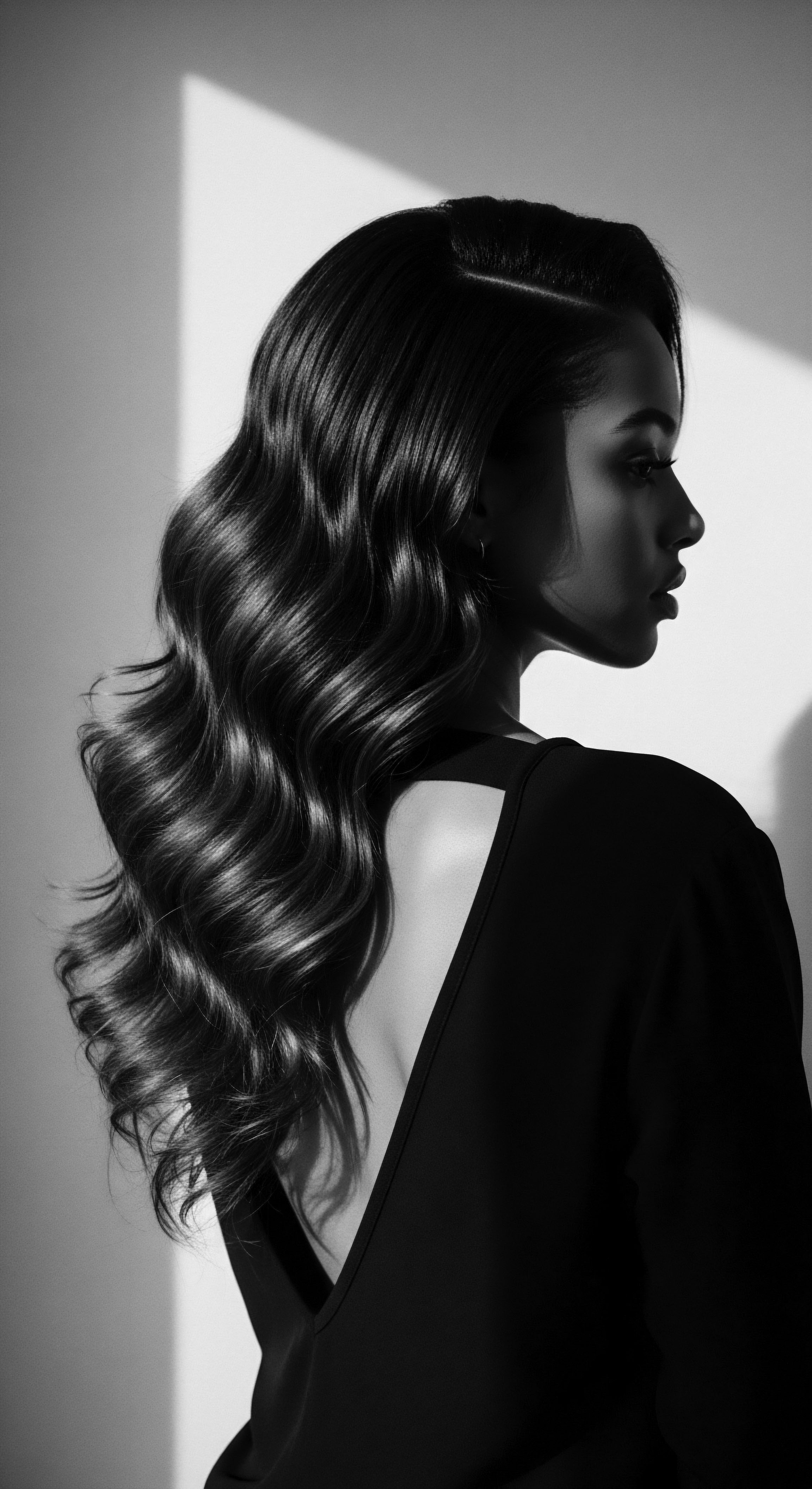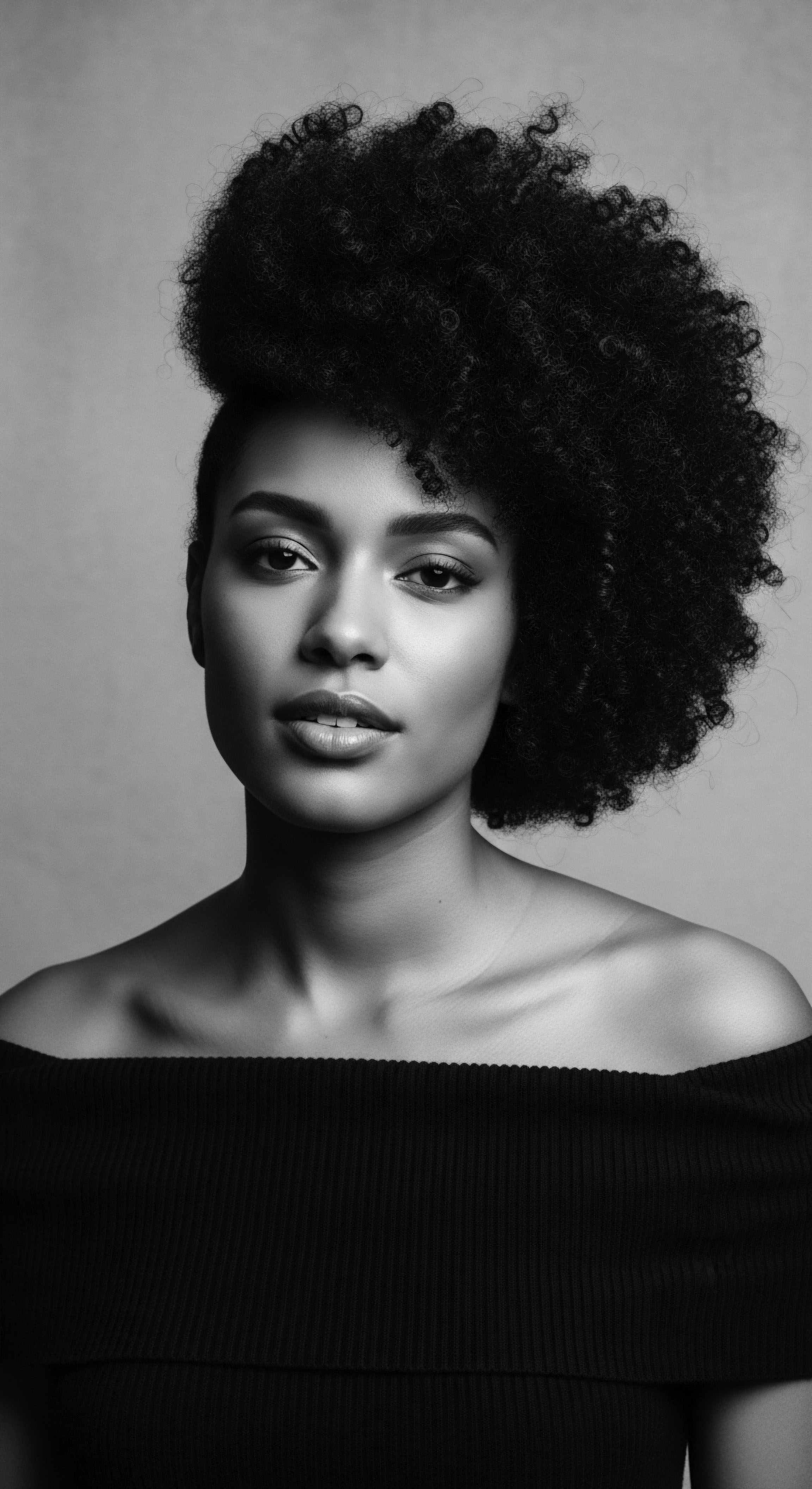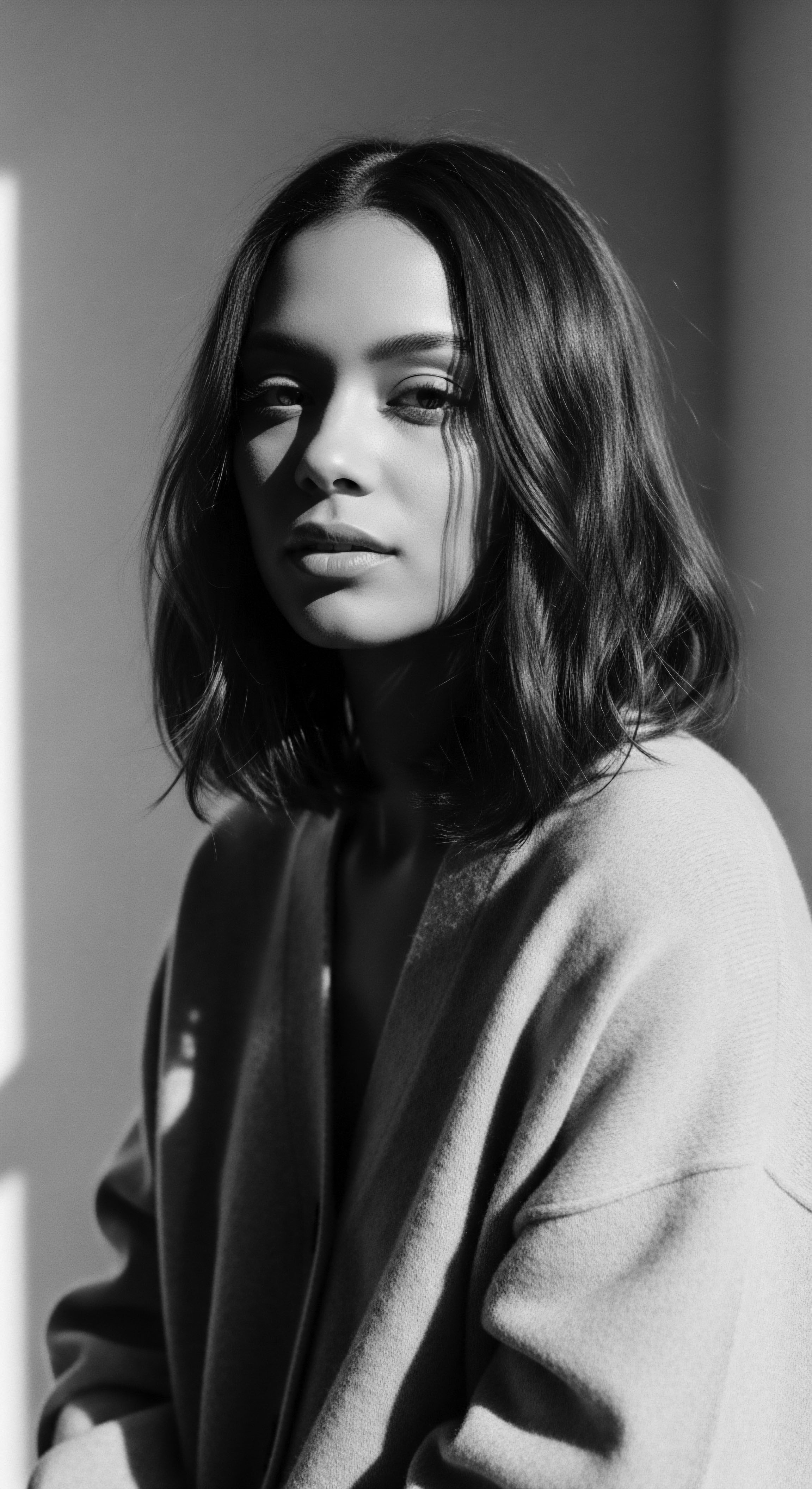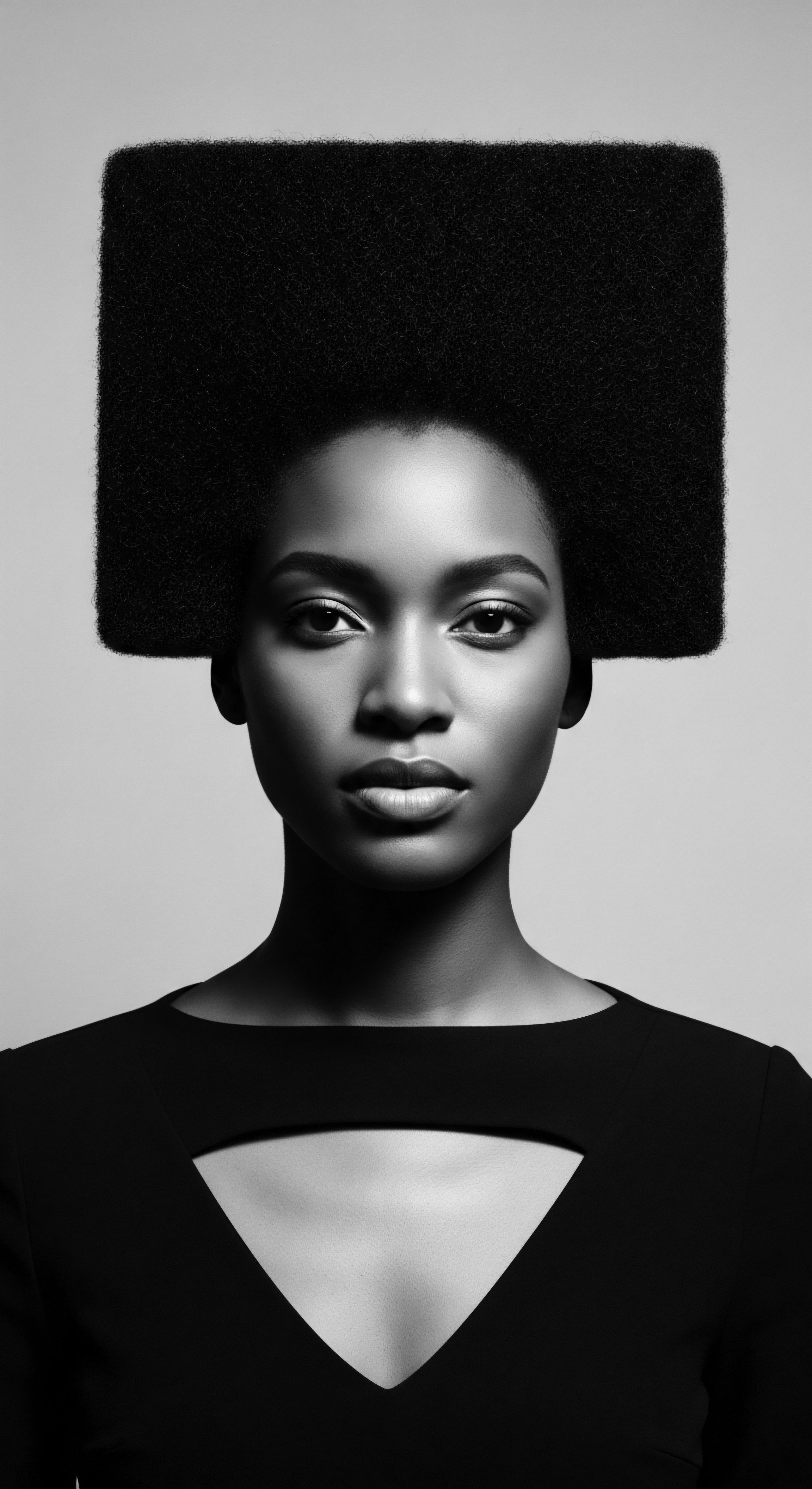
Roots
The very strands that crown our heads hold stories, echoes of ancient lands and enduring traditions. For those with textured hair, this connection reaches back through generations, a living testament to heritage. Our exploration begins here, at the source, examining how ancestral hair care, born of necessity and wisdom, finds its rightful place in our contemporary understanding of textured hair needs. The wisdom passed down, often quietly from hand to hand, from elder to child, holds within it profound truths about strength, resilience, and beauty.
The journey into textured hair heritage is a meditation on survival and cultural continuity. Ancestral practices were never simply about aesthetics; they represented a holistic approach to wellbeing, interwoven with community, spirituality, and identity. What was once essential for protection against the elements, for signifying social standing, or for spiritual communion, now offers a blueprint for care that truly aligns with the unique biology of coiled, kinky, and wavy hair.

Hair Anatomy and Its Ancestral Resonance
Understanding textured hair begins with its intrinsic structure. Unlike straight hair, which tends to be round in cross-section, coiled strands are often oval or elliptical. This unique shape, coupled with fewer cuticle layers, contributes to its remarkable volume but also its propensity for dryness, as natural oils from the scalp find it more challenging to travel down the spiraling strand. The hair follicle itself, curved in textured hair, shapes this distinctive growth pattern.
Ancestral care practices intuitively understood these qualities. They favored nourishing emollients and protective styles that minimized manipulation, practices now validated by modern trichology.
The rich diversity of hair textures within Black and mixed-race communities reflects a vast genetic heritage, shaped by millennia of adaptation across continents. From the tightest coils found in some Central African populations to the looser waves seen in parts of the diaspora, each variation possesses its own particularities and historical care modalities. The recognition of these specific needs, rather than a universal standard, is a central tenet of both ancestral wisdom and current textured hair science.
Ancestral hair wisdom, woven into generations, offers a timeless guide for nourishing textured strands.

Understanding Ancestral Hair Classifications
Before modern numbering systems, communities possessed their own lexicons for hair. These distinctions, often tied to appearance, texture, and suitability for certain styles, formed an intuitive classification system. For example, the Himba people of Namibia recognize specific hair states and adornments, like the Otjize paste, a mixture of butterfat and ochre, not just for cultural symbolism but also for protection against the sun and insects. This approach recognized hair as a living, breathing part of the self, responding to environment and care.
The language of hair was a profound visual communication. In pre-colonial African societies, hair styles could signify marital status, age, religion, wealth, rank, and even ethnic identity. The intricate patterns of cornrows, dating back at least 3500 BC, were not merely decorative; they conveyed information and could even serve as maps during times of profound struggle. This deep cultural embeddedness provides a powerful counter-narrative to later, imposed beauty standards that devalued textured hair.

Traditional Ingredients and Their Ancient Wisdom
The earth provided the original apothecary for hair care. From the nourishing butters of the shea tree to mineral-rich clays, these ingredients were selected for their inherent properties to cleanse, moisturize, and protect.
- Shea Butter ❉ Extracted from the nuts of the shea tree, native to West Africa, this rich butter has been used for centuries for its profound moisturizing and protective qualities. It helps seal in hydration and keratin, smoothing the cuticle and reducing frizz, which aligns perfectly with the needs of dry, curly, and coiled hair.
- Castor Oil ❉ Ancient Egyptians were pioneers in using castor oil for hair health, recognizing its nourishing properties to enhance growth and strengthen follicles.
- Chebe Powder ❉ Hailing from Chad, this traditional mixture, primarily from the seeds of the croton gratissimus tree, mixed with cherry seeds and cloves, has been used by Basara Arab women for centuries to promote length retention and luster. It speaks to a heritage of focused care, even if it requires a time-intensive application.
- Coconut Oil ❉ A staple in many ancestral practices across continents, particularly in South Asian traditions, revered for its nourishing capabilities for scalp and strands.
These natural ingredients, often gathered and prepared through communal rituals, highlight a reliance on what the immediate environment offered, fostering a sustainable and deeply connected approach to hair care. Their properties—hydration, barrier protection, nutrient delivery—are precisely what modern textured hair requires to thrive.

Ritual
Beyond the mere application of products, ancestral hair care was, at its heart, a ritual. These practices, steeped in generational knowledge and communal bonds, transformed routine into reverence. The alignment of these ancient rituals with current textured hair needs extends beyond ingredients to encompass the very methodologies of care, offering a profound sense of self-connection and holistic wellbeing.

How Does Communal Styling Shape Identity?
The act of styling hair in many African societies was a deeply communal and intimate experience. Mothers, sisters, aunts, and friends would gather, their hands working in tandem, sharing stories, advice, and laughter. This created a space for social solidarity, for the quiet passing down of cultural knowledge, and for strengthening familial bonds. During the transatlantic slave trade, when many cultural traditions were systematically stripped away, hair braiding endured as an act of resistance and resilience.
Enslaved people used braiding as a practical way to manage hair during long workdays, and also as a covert means of communication, even braiding rice seeds into their hair for survival. This historical context speaks volumes to the enduring power of hair as a marker of identity and community, a legacy that continues to resonate today.
Hair care rituals, rooted in community, have historically served as powerful acts of cultural preservation and resistance.
Today, many seek to reclaim this communal aspect, whether through shared styling sessions among friends or the professional braiding salon, which often serves as a social hub. The sense of trust and shared experience that characterized ancestral practices finds its modern echo in these spaces, reminding us that hair care is not just a solitary pursuit but a shared heritage.

The Art of Protective Styling
Protective styles, which minimize manipulation and tuck away delicate hair ends, are perhaps the most direct link between ancestral wisdom and current textured hair needs. These styles, including braids, twists, and locs, have been worn for millennia, offering both aesthetic appeal and practical benefits.

Ancestral Roots of Protective Hair Dressing
The deep heritage of protective styles spans various African ethnic groups.
- Cornrows ❉ One of the oldest and most recognizable styles, dating back to 3500 BC, with roots in various African cultures. These intricate patterns, laid close to the scalp, symbolized tribal affiliation, age, and social status. Their historical use extended to practical applications, such as conveying escape routes during slavery.
- Box Braids ❉ A modern iteration with roots in the “eembuvi braids” of the Mbalantu women in Namibia, where each section is meticulously formed into a uniform grid. They minimize breakage and allow for length retention.
- Bantu Knots ❉ Originating from the Bantu people of Southern Africa, these small, twisted buns protect hair and can create defined curls when unraveled.
- Locs ❉ Though often associated with 20th-century Rastafarian culture, forms of locs have spiritual and cultural meanings in ancient Africa, with evidence found in Vedic scriptures dating back 2,500 years. They are a testament to patience and continuity, reflecting a deep connection to spiritual and cultural identity.
These styles, consciously chosen today, align directly with the needs of textured hair prone to dryness and breakage. By keeping the hair tucked away, they reduce mechanical damage from daily styling, lock in moisture, and shield strands from environmental exposure. This strategic protection allows textured hair to retain length and grow stronger, a benefit recognized by both ancient practitioners and modern hair enthusiasts.
| Historical Practice Intricate Braiding |
| Traditional Purpose Signified identity, social status, marital status, or even acted as maps. |
| Current Alignment with Textured Hair Needs Offers unparalleled protective styling, reducing manipulation, promoting length retention, and preserving moisture. |
| Historical Practice Oiling Scalp and Strands |
| Traditional Purpose Nourished hair, protected against elements, and held spiritual significance. |
| Current Alignment with Textured Hair Needs Addresses the inherent dryness of textured hair, provides natural moisture, and supports scalp health. |
| Historical Practice Head Adornments |
| Traditional Purpose Displayed wealth, tribal affiliation, or marked rites of passage. |
| Current Alignment with Textured Hair Needs Modern bonnets and silk scarves provide nighttime protection for textured hair, minimizing friction and moisture loss. |
| Historical Practice The wisdom of past generations continues to illuminate the path for nurturing textured hair today. |

Relay
The journey of ancestral hair care continues, not as a relic of the past, but as a living inheritance. The insights gleaned from historical practices are not static; they are in constant dialogue with contemporary scientific understanding. This dynamic interplay allows for a deeper, more informed approach to textured hair care, demonstrating how ancient wisdom often finds validation in modern research.

How Does Modern Science Validate Ancestral Hair Traditions?
For centuries, natural butters, oils, and herbs were chosen for their perceived benefits, a selection process often guided by observation and passed-down knowledge. Now, scientific inquiry often explains the mechanisms behind these ancestral choices. For instance, the traditional practice of scalp massage, common in both African and Asian traditions for millennia, is now supported by research demonstrating its ability to increase hair thickness by stimulating dermal papilla cells and enhancing blood circulation to follicles.
A 2016 study, for example, showed measurable increases in hair thickness in men receiving daily scalp massages. This convergence of tradition and science reinforces the authority of ancestral methods.
The traditional use of plant-based oils like shea butter, almond oil, and castor oil for moisturizing and strengthening hair is similarly affirmed. These substances are rich in fatty acids and vitamins, which are now known to nourish hair, seal the cuticle, and provide a protective barrier against environmental stressors and breakage. The anti-inflammatory properties of shea butter also contribute to a healthy scalp, addressing issues like dryness and irritation, which were likely challenges in ancient times as well.

Scalp Health and Ancient Practices
A healthy scalp is the foundation for healthy hair, a concept deeply ingrained in ancestral wellness philosophies. Scalp care rituals often involved herbal rinses, oiling, and specific cleansing methods. These practices aimed to maintain balance within the scalp’s ecosystem, ensuring optimal conditions for hair growth.
Modern science echoes this, recognizing that disrupted scalp health contributes to thinning, breakage, and loss. Detoxifying the scalp with natural ingredients, much like ancient clay masks or herbal infusions, helps to remove buildup and reset the microbiome.

The Holistic Connection
Ancestral hair care extended beyond mere physical treatment; it was part of a larger, holistic approach to wellbeing. The idea that outer appearance reflects inner harmony is a concept present in many traditional African societies. This perspective encourages a view of hair care as an aspect of self-care and spiritual connection, not simply a cosmetic concern.
The enduring wisdom of ancestral hair practices finds compelling validation in contemporary scientific understanding.
When we consider the environmental factors influencing ancient hair health – access to clean water, nutrient-rich diets, and less exposure to synthetic chemicals – we see a contrast with many modern lifestyles. This prompts a re-evaluation of our own habits. The wisdom of our ancestors, who relied on natural ingredients and mindful routines, serves as a powerful reminder of the interconnectedness of our bodies, our environment, and our haircare journey.
A case study of the Basara Arab women of Chad powerfully demonstrates the effectiveness of ancestral practices in achieving remarkable hair health. Their consistent, generational use of Chebe Powder, applied with dedicated ritual, results in exceptional length retention and hair luster. This is not a quick fix, but a long-term commitment to a tradition that prioritizes gentle, consistent nourishment and protection, a philosophy directly applicable to the current needs of textured hair that seeks to minimize manipulation and maximize growth potential. It shows that patience and ritual, combined with potent natural ingredients, yield significant results.

Bridging Generational Gaps in Care
The transmission of hair knowledge across generations was once seamless, a living library of techniques and remedies. The disruption of this transmission, particularly during the transatlantic slave trade and subsequent periods of imposed Eurocentric beauty standards, created a void. Reclaiming ancestral practices today is an act of reconnection, mending that historical rupture.
It allows individuals to honor their heritage while addressing the specific needs of their textured hair with wisdom that has stood the test of time. This reclamation can mean seeking out elders who still practice traditional methods, researching ethnobotanical knowledge, or simply incorporating ingredients that were historically significant.
The Afro, a powerful symbol of Black pride during the Civil Rights Movement, stands as a testament to this reclamation, a visible assertion of identity and a rejection of imposed beauty ideals. It represents a continuity of resistance and self-affirmation through hair that dates back to the very act of enslaved people using their hair to defy dehumanization. This historical context provides a deep cultural framework for understanding why ancestral hair care remains so profoundly relevant.

Reflection
To journey through the heritage of textured hair care is to understand that a strand is never merely a strand. It is a conduit, a vessel carrying stories from time immemorial, a living archive of resilience and beauty. The profound alignment between ancestral practices and the current needs of textured hair reminds us that solutions often lie not in complex innovations, but in the enduring wisdom of those who came before us. This is the very Soul of a Strand ❉ a testament to continuity, a celebration of identity, and a profound declaration of self-worth.
When we apply shea butter, when we braid a protective style, or when we gently massage our scalp, we are not simply tending to our physical appearance. We are participating in a timeless dialogue, acknowledging a legacy of profound knowledge. This isn’t about rigid adherence to the past, but rather an informed reverence, allowing ancestral wisdom to guide our modern choices.
The textures we wear today, in all their glorious formations, are a triumph—a vibrant expression of survival, cultural pride, and an unbreakable bond with our origins. Each coil, each wave, each twist speaks of a journey, a relay of care and connection that continues to define who we are and who we are becoming.

References
- Byrd, A. D. & Tharps, L. (2001). Hair Story ❉ Untangling the Roots of Black Hair in America. St. Martin’s Griffin.
- Diedrich, K. (2022). The Natural Hair Handbook ❉ A Guide to Afro-Textured Hair Care. Independently Published.
- Gale, R. P. & Long, M. C. (2018). Hair ❉ A Cultural History. Bloomsbury Academic.
- Hord, T. R. (2008). Exploring the Roots of Rastafari. The University of North Carolina Press.
- Mercer, K. (1994). Welcome to the Jungle ❉ New Positions in Black Cultural Studies. Routledge.
- Patel, T. & Maibach, H. I. (Eds.). (2018). Hair and Scalp Diseases ❉ Medical, Surgical, and Aesthetic Treatments. CRC Press.
- Sherrow, V. (2006). Encyclopedia of Hair ❉ A Cultural History. Greenwood Press.
- Springborg, P. (2016). The Oxford Handbook of the History of Hair. Oxford University Press.
- Tuttle, S. B. (2016). Standardization of scalp massage for hair thickness in androgenetic alopecia. Dermatology Practical & Conceptual, 6(1), 1–4.
- Walker, A. (1992). The Temple of My Familiar. Harvest/HBJ Book.
